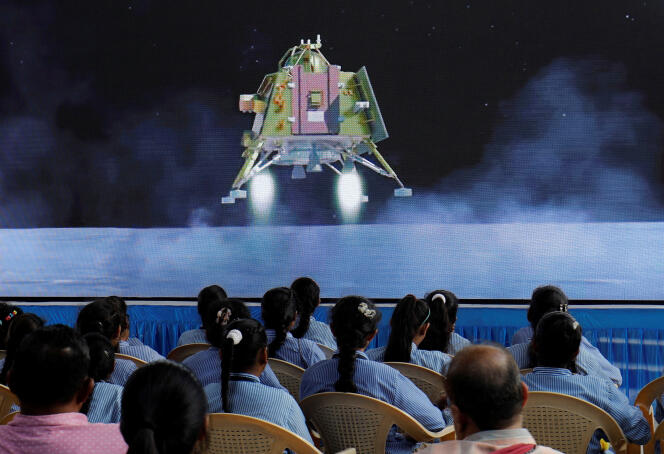


Three times this summer, the Moon was the object of a spatial mission. On August 19, Russia's Luna-25 lander experienced an anomaly during its final descent and crashed into the surface of our satellite. This failure prevented Moscow from reconnecting with its distant and glorious past (in 1976, the Soviet probe Luna-24 brought back samples of lunar soil) and cruelly illustrated the loss of Russian space know-how in exploration missions. On August 23, India became the fourth nation to land on the Moon with its Chandrayaan-3 mission. Finally, on September 7, Japan launched its SLIM probe which, if all goes well, will make it the fifth country to land on the lunar surface.
Even though each of these three missions was modest in scope, together they are significant. They follow the major programs being conducted by the world's two leading powers. The United States is leading the Artemis program (in which the European, Canadian and Japanese space agencies are also participating), which aims to send humans back to the Moon in a few years' time. China, since 2007, has conscientiously completed successive stages of its Chang'e project, with successes such as the first rover on the far side of the Moon in 2019 and a sample return the following year. Beijing has made no secret of its ambition to send astronauts to the Moon by 2030, and even to set up a permanent base there.
Why this renewed interest in lunar exploration, which had been neglected after the end of the Apollo program in 1972? There are many reasons, but as demonstrated by the pride evident in India after the successful landing of Chandrayaan-3, national prestige is not to be overlooked. There is also the desire to belong to the elite club of great space powers, synonymous with modernity and advanced technology. The Moon symbolizes a spirit of conquest, and it's hardly surprising that Narendra Modi, Xi Jinping and Donald Trump (who launched the Artemis program during his presidency) are all enthusiastic about it.
On the other hand, it would be misleading to compare the Moon race of the 1960s to our times, replacing the USSR of yesteryear with China. With the Artemis and Chang'e programs, neither Washington nor Beijing is seeking to prove to the world the supremacy of its model of society, as was the case during the Cold War. Even though delays may prevent the Americans from walking on the Moon again by December 2025 as they had planned, their mastery of space technology remains far more advanced than that of China. China is still learning, with the declared aim of catching up and methodically reproducing what its Soviet and American predecessors achieved in the 20th century.
You have 47.97% of this article left to read. The rest is for subscribers only.
